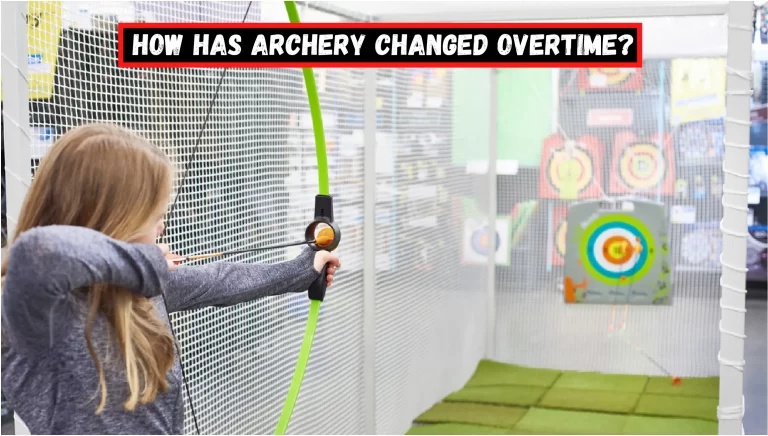How to Make Archery Target? – (Step By Step Guide)
"As an Amazon Associate, I earn from qualifying purchases. This post contains affiliate links"
Archery is a sport that can be enjoyed by people of all ages and skill levels. If you are interested in trying archery but don’t know where to start, this easy guide will show you how to make your own archery target.
With a few simple materials, you can create a durable and reliable target that will help you practice your skills and improve your accuracy.
Making your own archery targets is a great way to save money and get exactly what you want. You can tailor the target to your own shooting style and practice as much or as little as you like.
Plus, it’s a fun project that you can do with family or friends. Here’s a quick guide on how to make your own archery target.
Can We Make Our Own Archery Targets?
It is no secret that archery is an expensive sport. Not only do you have to buy the equipment, but you also have to pay for targets.
If you are a serious archer, you can easily spend hundreds of dollars on targets each year. So, can we make our own archery targets?

The answer is yes! With a little time and effort, you can make your own high-quality archery targets that will last for years. The best part is that you can tailor the targets to your specific needs.
For example, if you want to practice long-range shots, you can make a target that is larger than the standard size.
we’ve already made an article about “ How Long Does it Take to Learn Archery “, we recommend you read.
There are many different ways to make archery targets, but one of the simplest is to use straw bales. Straw makes an excellent target material because it is both cheap and durable.
What Is The Best Material To Make An Archery Target?
There are a few different types of materials that can be used to make an archery target, but some are better than others. For example, foam is a popular material for targets because it is lightweight and easy to move around.
However, foam is not as durable as other materials like straw or hay, so it will need to be replaced more often. Straw or hay targets are a good option because they are more durable and will last longer, but they can be more difficult to transport and set up.
Ultimately, the best material for an archery target depends on your individual needs and preferences. In addition, the budget also plays an important role in the final decision.
What Are The Worst Materials To Make An Archery Target?
There are a few materials that you should avoid using when making an archery target. Some of the worst materials include cardboard, paper, and Styrofoam.
These materials are all too easily damaged by arrows, and they won’t provide enough stopping power to properly protect your arrows.
In addition, these materials can be dangerous if they break apart and become airborne while you’re shooting.
Another material to avoid is plastic. Like cardboard and paper, it’s not very durable and can break apart easily. Plus, it doesn’t provide much stopping power for your arrows. If you do use plastic, make sure it’s thick and rigid so it won’t shatter easily.
Finally, stay away from metal targets. They can damage your arrows and cause them to bounce off unpredictably.
How To Make An Archery Target Step By Step
Whether you’re a beginner or an experienced archer, making your own archery target is a great way to save money and have some fun. Follow these simple steps to make your own archery target.
Things You Will Need To Make An Archery Target!
Whether you want to make an archery target for yourself or for a friend, this guide will show you how to make one easily.
You’ll need some basic materials like a piece of plywood, a saw, and some paint, but once you have those things, you can make a great target in just a few steps. Keep reading to learn how.
First, gather your materials. You will need a large piece of cardboard, strong tape (such as duct tape), stuffing material (old clothes or packing peanuts), Paint, and a wooden Post.
Step 1: Cut the Piece of Cardboard into a Circle
If you’re looking to make your own archery target, the first step is to cut a piece of cardboard into a circle. You can use a template or simply trace around a plate or bowl to get the perfect shape. Once you have your circle, use a sharp knife to cut it out.
Next, you’ll need to score the cardboard so that it’s easier to fold. Simply run your knife along the circumference of the circle, being careful not to cut all the way through.
Step 2: Fill A Bag With Some Filling Materials Such As Hey, Old Clothes
After cutting the cardboard into a circular shape, the next step is to create a base for it. There are two ways for making the base. One of them is to attach the cardboard bull’s eye directly to the wooden post but that is not recommended.
It is simply because the hard stem of the wooden post will likely damage the arrow. Therefore, you should always use a bag filled with some soft filling material such as clothes or hay, or even straw. This will provide a soft cushion and will help protect the arrow.
Step 3: Attach The Bulls Eye And Support Together
Now that you have the support and the bull’s eye together, it is time to attach them. This is a fairly easy process, but there are a few things you need to keep in mind. First, make sure that the support is securely attached to the bull’s eye.
You don’t want it to fall off when you are shooting at it. Second, make sure that the bull’s eye is level with the ground. You don’t want it to be tilted so that your arrows will go off target.
Finally, once you have everything attached, take a few practice shots to make sure everything is working correctly.
Final Words
In this article, we’ve described an easy way How to Make Archery Target? In addition, we discussed some interesting things such as the most common and suitable materials for archery targets, as well as what materials should be avoided.
Hopefully, after reading this article you will have a better understanding of what kind of materials to choose and how to make a DIY archery target for your practice at home without any problems.
Feel free to leave a comment if you have any questions regarding archery targets and the materials used for their construction.
Related Posts:-




![When Did Archery Become An Olympic Sport? – [You Need to Know!]](https://archerypick.com/wp-content/uploads/2022/12/2When-Did-Archery-Become-An-Olympic-Sport-768x436.webp)


